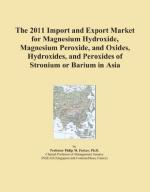|
This section contains 579 words (approx. 2 pages at 300 words per page) |

|
Overview
Magnesium hydroxide (mag-NEE-zee-um hye-DROK-side) is a white powder with no odor, found in nature as the mineral brucite. Perhaps the best known form of the compound is a milky liquid known as milk of magnesia, a product used to treat upset stomach and constipation. Milk of magnesia was invented in 1817 by the Irish pharmacist Sir James Murray (1788–1871). Murray built a plant to produce a mixture of magnesium hydroxide in water that he sold for the treatment of a variety of ailments, including heartburn, stomach acidity, bladder and bowel problems, and "female problems." He said that the liquid mixture was much more effective than powdery magnesium hydroxide which had previously been used for the same purposes.
Key Facts
Other Names:
Magnesium hydrate; milk of magnesia; magnesia magma
Formula:
Mg(OH)2
Elements:
Magnesium, hydrogen, oxygen
Compound Type:
Inorganic base
State:
Solid
Molecular Weight:
58.33 g/mol
Melting Point:
|
This section contains 579 words (approx. 2 pages at 300 words per page) |

|


